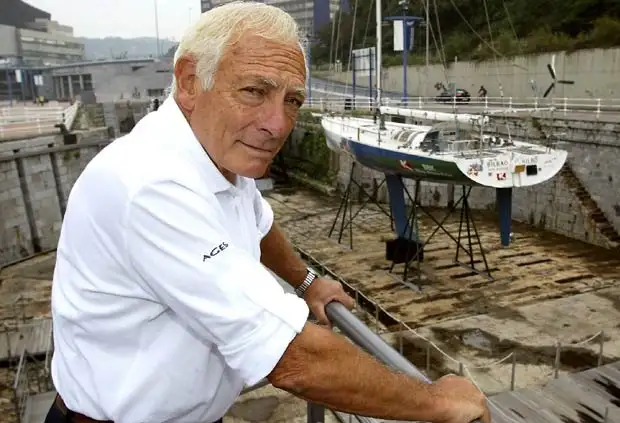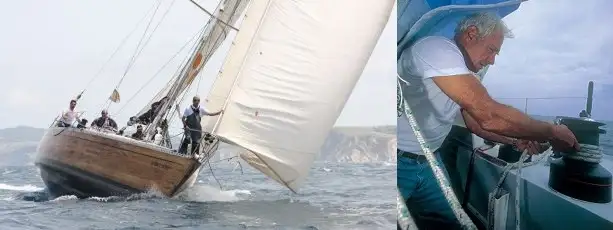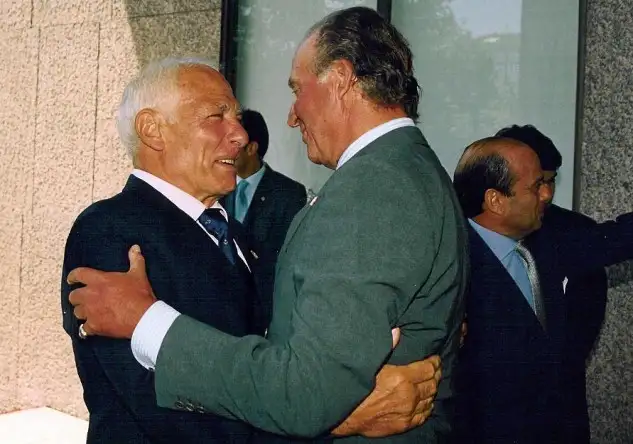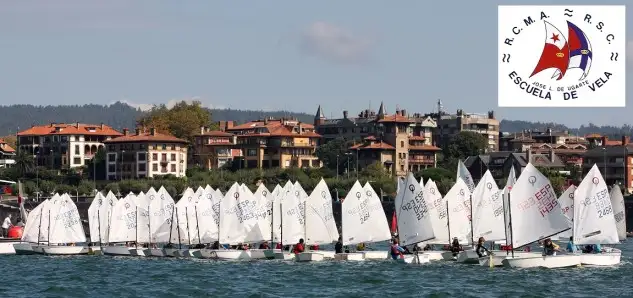
José Luis de Ugarte, the Spanish navigator par excellence of the 20th century
José Luis de Ugarte, the Spanish navigator par excellence of the 20th century
José Luis de Ugarte was born in the town of Getxo on November 6, 1928. While his passion was always the sea and the navigation, as a professional sailor he was, the truth is that Ugarte became famous in the specialty of a lonely navigator already advanced in age. His first steps in the elite were in 1979, being the first Spanish to participate in the BOC Challenge, considered without discussion the most important race at the international level for solitary sailors. As early as 1992 and 1993, the Vendée Globe was awarded in 1996 at the level of the Spanish State, when S.M.Don Juan Carlos I, the Medal for the Sports Merit was imposed.
Ugarte makes the "mili" in the fragata Martín Alonso Pinzón. After studying Nautica, he sails in the merchant and Spanish and English marines. After a while he disembarks in Liverpool, where he is married and established, at the same time he is established as a naval provisionist. There he acquires an old fish, the Orion Iru, a boat that takes his Bilbao, making on it, once removed, which would be his first journey as a single navigator.
Over the next 20 years, their adventures are growing. His first participation in the race was in the Falmouth-Azores-Falmouth, in 1979. It successfully covered the route of the 2400 nautical miles of the event by achieving the second position. With this gesture, he managed to qualify for the Ostar Legend in 1980, a very long race that had a tour of 3000 miles, with exit in Plymouth and arrival on the American coast, to Newport. The misfortune wanted the bow stay to be broken to his Northwest when he was in first position, which forced him to deviate to the Azores to repair the failure. Four years later he returned to this race, leaving third.
The momentum for major challenges receives it on its return to La Azab, winning in all categories, when it obtained a third meritorious position in monocascos at Carlstar 88. On the horizon the BOC Challenge 1990-1991, a solo world return divided into four stages, in which it achieved the most important, which was nothing but to end. Despite the true gesture, it was about to come, and it was the one that put in the mouth of all the name of this man of another time, a mule of the imaginary Achabs or more real Shackelton or Ad@-@ mundsen. His name: Vendée Globe 1993, a new return to the world alone, but on this occasion without scales and without external aid, a test qualified by many as suicidal, a real decline to the inns, the most risky race of all time. And there, at 64, on the way from the age of 65, José Luis decided that his place was.

José Luis Ugarte in the Naval Museum of Bilbao, which I dedicate so many hours and hours to in its start-up. At the bottom in the varadero-exhibitor of the Museum the BBK with which he managed to complete the Vendee Globe in 1993, becoming part of the mythology of the world navigators.
When after 135 days of race, he returned to the French port of Les Sables d'Olonne with his exhilarated Euskadi Europa 93, not even the apotheosic reception, which gave him a crowd that stoically endured the bad time to haunt him, he delivered from his head the terrible moments that had been experienced, which became known with storytellers. Two dead race companions, a water track on his boat that made him think seriously and fridly about death, food shortages and the total absence of wind that held him seven days in Ecuador and that was about to end him psychologically, led Ugarte to express himself with meridian clarity, in the midst of the crowd, after the embrace with his wife Edith: "He wasn't as strong as I thought."He said of himself. "It's an inhuman test. Never again; it is something that can only be done once in a lifetime"... if you're lucky you can tell.
Eleven years later, Ugarte, José Luis, returned to the nautical walks. Looking back at the Euskadi Europa 93, stranded in the dry dike of the Maritime Museum of the Ria of Bilbao as a witness to his feat, he again feels the call of that sea that he has never abandoned and in which he has lived even the birth of his grandson.
Embarraged since October 22, the tanned and veteran sea wolf in the popular imaginary is again felt. The bet is again to turn around the world (and go four); this time, following the mark of the most important Basque marine, of his land, Juan Sebastián Elcano. On board a modernized replica with a relief engine, from the historic nao Victoria. That's right, no loneliness. For the occasion, it has been surrounded by a group of 20 people, among marine and scientific experts, who will make more of the monotony around the orb by the great blue. This replica was built for the EXPO 92 of Seville, by the Nao Victoria Foundation.
José Luis member of one of the most prestigious clubs in the world: the Real Club Marítimo del Abra - Real Sporting Club de Las Arenas, in which it was in the 1980s and 1990s its Commodore. His work as manager was excellent, being the creator of the Costa Vasca de Cruises Regata (Club's most important cruise race), as well as the promoter of the Gitana Cup as an event dedicated to the classic ships, and of the solitary races in El Abra. In its honor the Club has given its name to the excellent School of Sailing, and each year in September it is held in Getxo "The Week of Sailing José Luis de Ugarte," reserved for the basic sailing. Ugarte left us in July 2008 after a painful illness, but his example as a navigator and his human quality will always be present for the sailing fans.
© 2024 Nautica Digital Europe - www.nauticadigital.eu














